Physical Address
304 North Cardinal St.
Dorchester Center, MA 02124
Lobar collapse: this is divided into those causes due to an endobronchial obstruction (intrinsic or extrinsic) or those causes without obstruction
A segment of atelectatic lung pivots around the central hilum via its attaching bronchovascular structures – any fissures will also influence the direction of collapse
Common causes differ between adults and children:
Adults: intrinsic obstruction is commonly due to a bronchogenic tumour (especially in middle-aged or elderly smokers) or mucous plugs
Rarer causes: foreign bodies ▸ broncholiths ▸ focal bronchostenosis due to inflammation or trauma
Children: intrinsic obstruction is commonly due to an inhaled foreign body or mucous plugs ▸ tumours are very rare
Subsegmental atelectasis (linear or plate atelectasis): this describes atelectasis involving less than a whole segment ▸ it is usually a thin horizontal linear opacity abutting the pleura
It is commonly located within the mid or lower lung and can cross segmental boundaries
Increased opacity of the affected lobe: this is due to retained secretions and a reduction in lobe aeration
Silhouette sign: this describes loss of an air–soft tissue interface when a segment of collapsed lung abuts an adjacent soft tissue structure (e.g. a heart border)
Direct signs of volume loss: fissure displacement ▸ displacement and crowding of the pulmonary vessels and bronchi
Upper lobe collapse: hilar elevation ▸ the ipsilateral main bronchus becomes more horizontally orientated
Lower lobe collapse: a ‘small hilum’ – the collapsed lower lobe obscures the lower lobe artery and therefore smaller vascular structures are seen at the expected hilar position ▸ the ipsilateral main bronchus becomes more vertically orientated
Indirect signs of volume loss: compensatory shifts of adjacent structures (e.g. hyperinflation of the remaining lobes in proportion to the degree of volume loss) ▸ the contralateral lung may extend across the midline ▸ the anterior junctional line is displaced to the contralateral side ▸ displacement of the azygo-oesophageal or posterior junctional lines on a PA CXR ▸ rib crowding
A juxtaphrenic diaphragmatic peak: this describes a small triangular density at the highest point of the hemidiaphragm dome with upper lobe (± middle lobe) collapse – this is a useful ancillary sign
‘Shifting granuloma’ sign: a change in position of a granuloma with hyperexpansion
Mediastinal shift: this is greatest with a lower lobe collapse, and least with middle lobe collapse ▸ little mediastinal shift is seen with an acute upper lobe collapse but there is a greater shift with chronic fibrotic upper lobe volume loss
Luftsichel sign : paramediastinal translucency secondary to an overinflated superior segment of the ipsilateral lower lobe occupying the space between the mediastinum and medial aspect of the collapsed upper lobe ▸ L > R ▸ typical of left upper lobe collapse
An elevated hemidiaphragm (particularly with left upper lobe collapse) is of limited value
Ancillary features: absence of air bronchograms within an affected lobe should raise the possibility of a central obstructing lesion
‘Golden's S’ sign: this describes the S shape (reverse S on the right) of a major fissure due to a combination of collapse and a central mass ▸ it is commonly seen in the right upper lobe (but can be seen in any lobe)
Focal central convexity: collapse around the central mass
Concave outline peripherally: peripheral collapse not occurring around a central mass
Accurate delineation of a tumour mass from surrounding collapsed lung can be difficult but collapsed lung will usually enhance more than a tumour (the maximal difference is seen between 40 s and 2 min post IV injection) ▸ increased uptake on PET-CT within tumour vs lung collapse
CT mucous bronchogram sign: tubular, low attenuation branching airways that are dilated with inspissated secretions and seen within the enhancing collapsed lobe (post IV contrast administration) – this is highly suggestive of an obstructing lesion causing lobar collapse
However this can also be caused by excessive mucus production combined with decreased mucociliary function (e.g. ABPA, asthma, cystic fibrosis)
Potential pitfalls: air bronchograms may be seen in peripheral collapsed lobes (due to collateral air drift or tumour necrosis) ▸ a proximal obstructing lesion may not cause complete lobar collapse (if a fissure is incomplete and allows collateral air drift) ▸ occasionally the parenchyma and airways can become fluid filled due to a central obstructing lesion with little or no volume loss giving rise to the appearance of a ‘drowned lobe’ ▸ false-positive diagnoses may be due to bronchial strictures, mucous plugs, or compression by a large pleural effusion
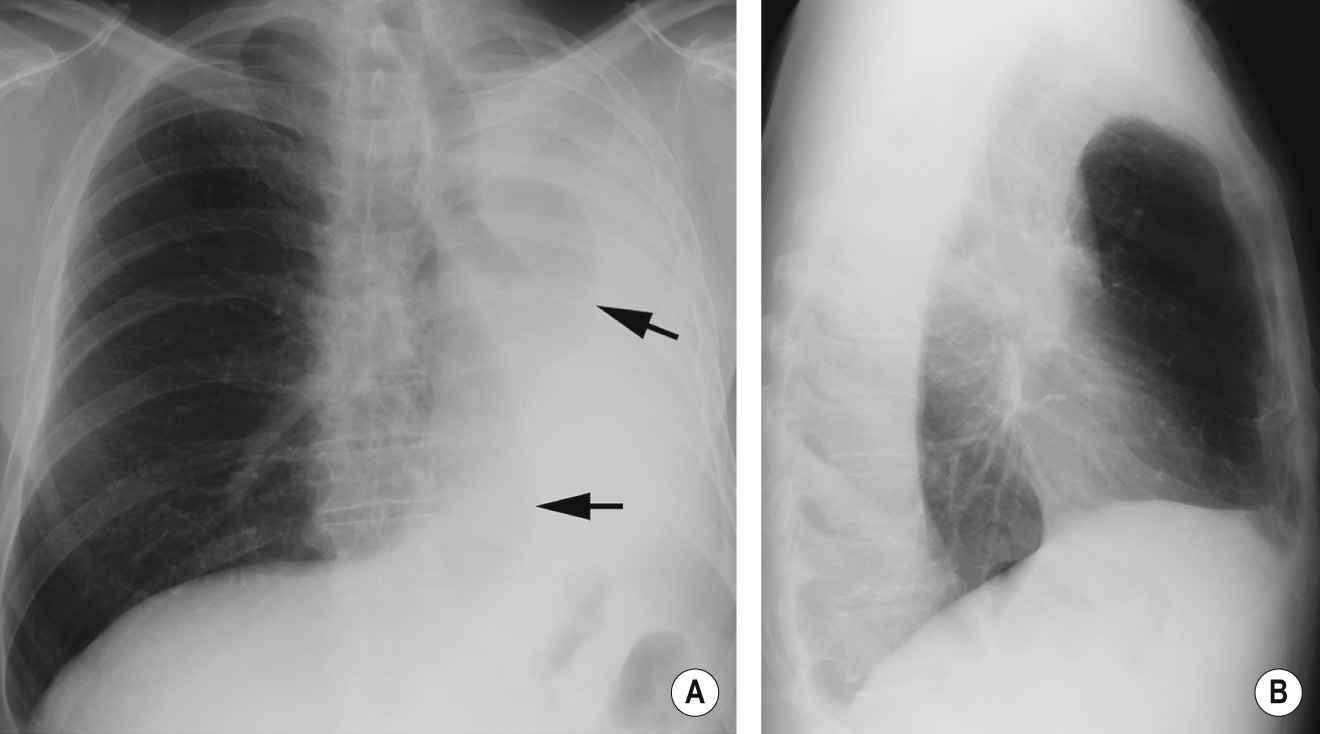
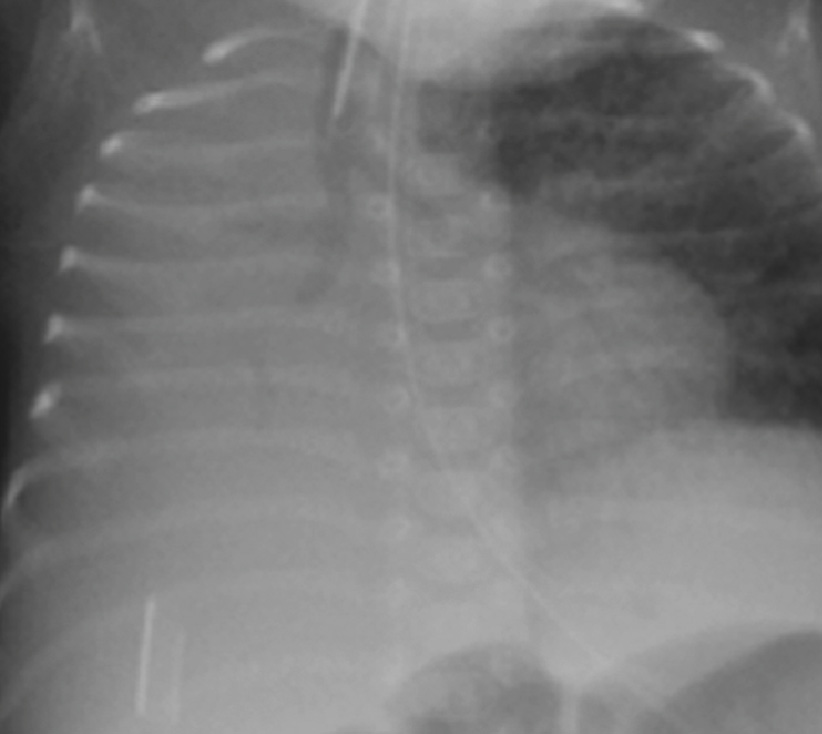
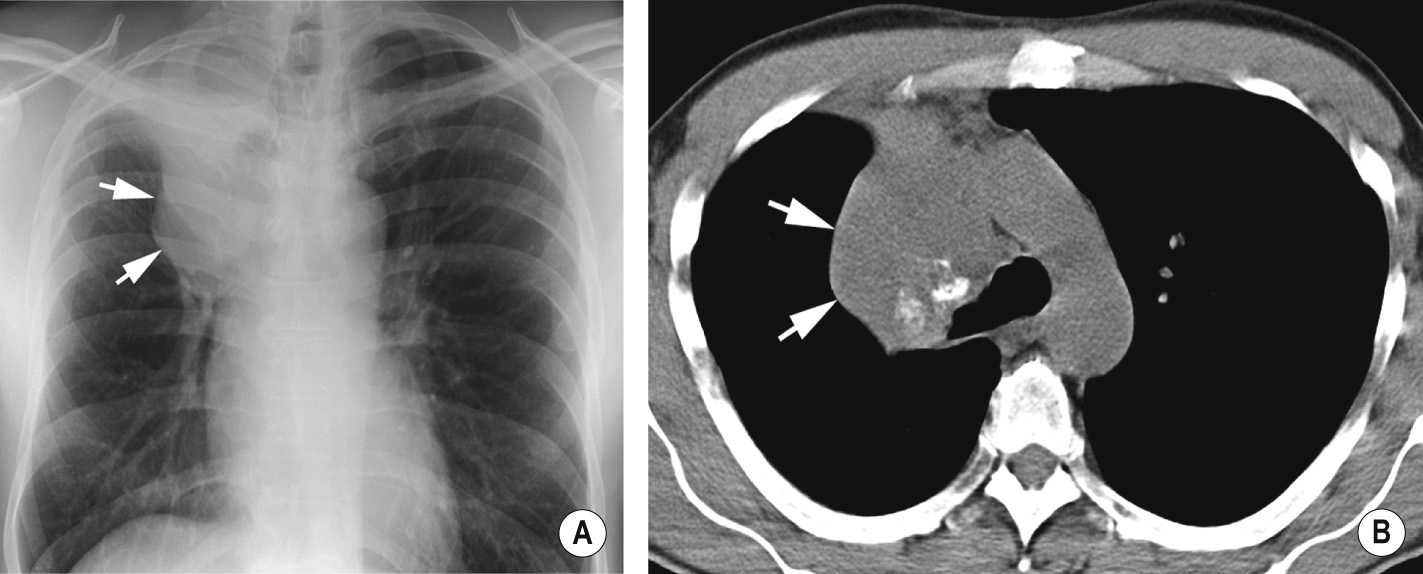
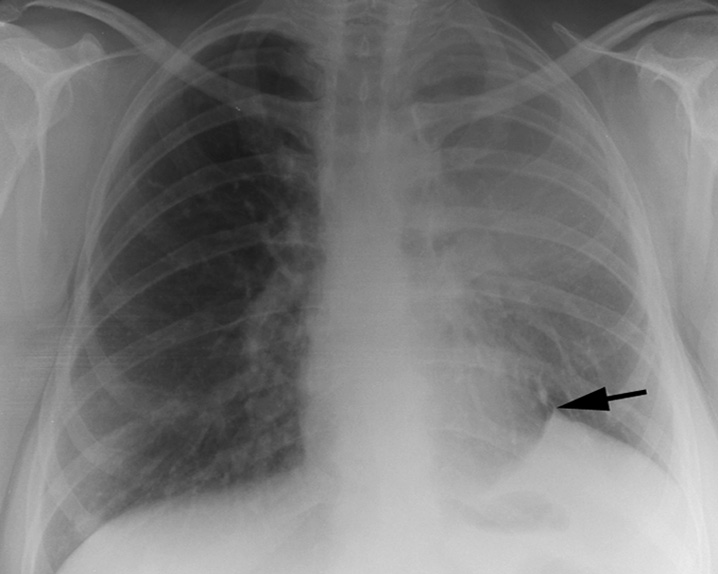
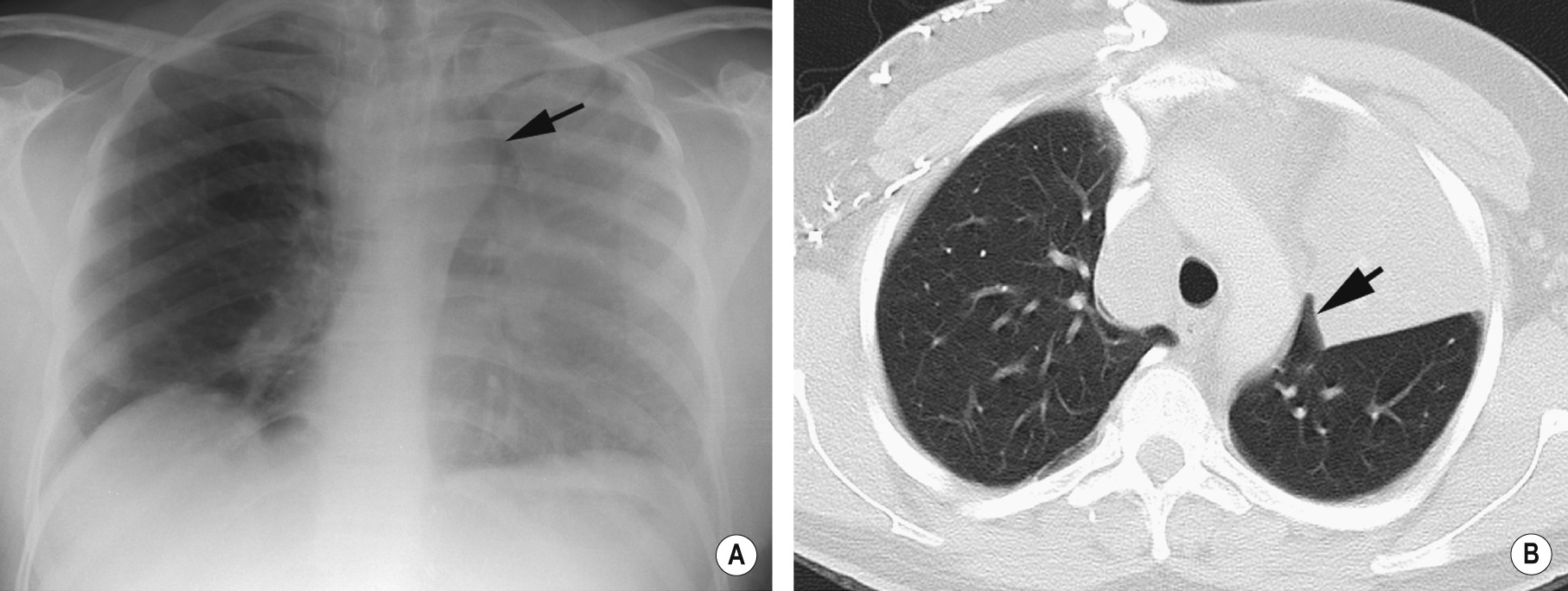
Increased density at the apex of the right hemithorax adjacent to the right mediastinum ▸ an elevated horizontal fissure with a concave inferior outline
Become a Clinical Tree membership for Full access and enjoy Unlimited articles
If you are a member. Log in here